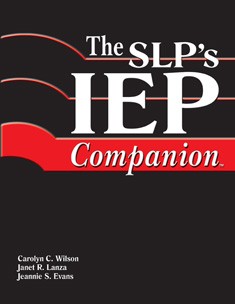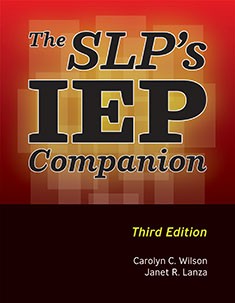*DISCONTINUED (*NEW EDITION in Alternatives below)
The book is divided into twelve units. Every unit has yearly goals arranged in order of difficulty. Each yearly goal is supported by a hierarchy of six to twenty-five individual objectives. Each individual objective has a corresponding intervention objective (treatment goal).
A broad range of skills applicable to ages one through eighteen is covered:
- Pragmatics—pragmatic behaviors in nonverbal children; conversation skills for preschool, school-age, and adolescent children; classroom social skills; and narrative discourse skills
- Vocabulary and Meaning—labels and categories; concepts; antonyms/synonyms; word relationships; figurative language; inferences, predictions, and outcomes; and more
- Syntax and Morphology—each section begins with a receptive task where appropriate and progresses from the imitated level to use of the target skill in phrases, sentences, conversation, and writing; includes parts of speech, questions, and sentence structure
- Critical Thinking for Language and Communication—organized according to the Model of Thinking by Costa and Lowery, and Bloom's Taxonomy of Educational Objectives; sections cover the input, retrieval, and processing of information and metacognition
- Organization and Study Skills—organizing and managing tasks, time, space, and materials; class attitude; and study skills
- Listening—auditory processing skills (auditory discrimination, figure ground, and memory) and listening in different situations (e.g., enjoyment, understanding)
- Literacy: Reading—learning to read (phonological awareness, and reading readiness, accuracy, fluency, and comprehension) and reading to learn (narrative and expository text)
- Literacy: Writing—the mechanics of writing and writing to communicate
- Speech Production—objectives and interventions for the traditional approach to articulation and the phonological process approach
- Oral Motor—improve awareness, strength, tone, and flexibility of the speech musculature
- Voice—address hyperfunctional voice disorders by modifying the environment, recognizing and eliminating vocal abuse behaviors, and improving voice quality
- Fluency—issues specific to less advanced and more advanced stuttering; modification of the environment; maintenance and transfer of improved fluency
More helps include:
- step-by-step guide to writing measurable objectives
- suggestions for the treatment of autism, Asperger's Syndrome, dyslexia, and dysgraphia
- helpful lists including, First Words, Labels and Categories, Concepts, Grammatical Structures, and more
- visual organizers for reading and writing

 Proud to be Canadian
Proud to be Canadian

